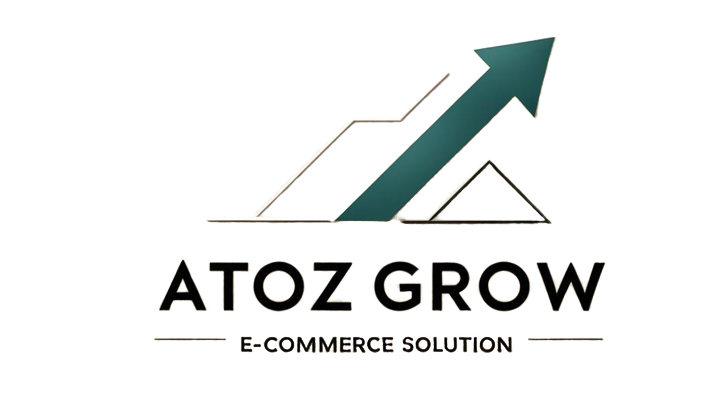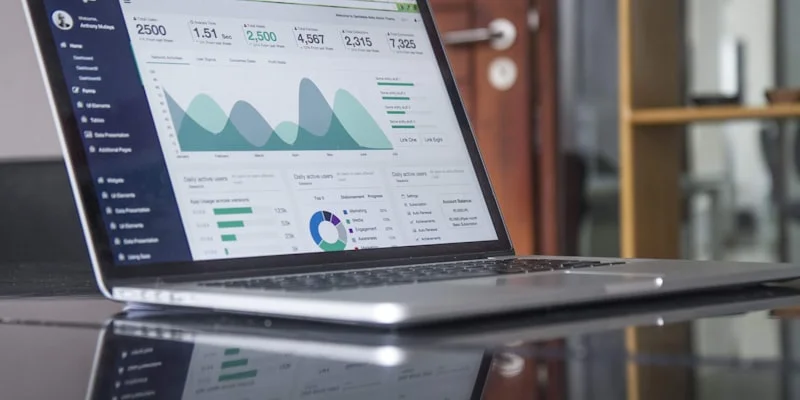The Evolution of Consumer Demand in 2025
Amazon’s marketplace continues to reflect rapidly changing consumer preferences, with social media trends, health consciousness, and sustainability driving unprecedented demand in specific categories. Based on comprehensive analysis of search volume data and marketplace trends, certain product categories have emerged as clear winners for sellers looking to capitalize on 2025’s most profitable opportunities.
Recent data reveals that successful Amazon sellers are those who identify trending niches early and position themselves before market saturation occurs. With independent sellers generating over $290,000 in average annual sales, understanding these trends is crucial for competitive success.
Top Trending Product Categories
1. Pet Supplies & Novelty Pet Products (38,466% Growth)
The Pet Revolution: The pet supplies category has exploded with unprecedented 38,466% growth in specific niches, driven by viral social media trends and increased pet ownership post-pandemic.
Hot Sub-Categories:
- Pet costumes and accessories: “Cat batman mask” and themed pet wear
- Interactive pet toys: Smart toys with app connectivity
- Pet health and wellness: CBD products, supplements, and monitoring devices
- Travel accessories: Car seats, carriers, and safety gear
- Pet photography props: Social media-friendly accessories
Market Opportunities:
- Average selling price: $15-$45 per item
- Profit margins: 40-70% for unique/branded items
- Competition level: Medium to high in generic products, low in specialized niches
- Seasonal factors: Halloween, holidays drive costume sales
Success Strategies:
- Focus on viral-potential products (unique, photogenic items)
- Leverage social media trends and memes
- Create bundles for higher order values
- Emphasize safety and quality in product descriptions
2. Health & Wellness Technology
The Self-Care Tech Boom: Health-conscious consumers are driving demand for personalized wellness solutions and monitoring devices.
Trending Products:
- Sleep optimization tools: Mouth tape, sleep strips, and breathing aids
- Air quality monitors: Home air purifiers and quality sensors
- Fitness tracking accessories: Smart scales, posture correctors
- Mental wellness devices: Meditation aids, stress relief tools
- Recovery equipment: Massage guns, compression therapy devices
Market Analysis:
- Growth trajectory: 250-400% year-over-year in sleep category
- Price points: $25-$150 per item
- Target demographics: Ages 25-45, health-conscious consumers
- Profit potential: High margins due to perceived value
3. Eco-Friendly Home Products
Sustainability-Driven Purchasing: Environmental consciousness is driving consistent demand for sustainable alternatives to everyday products.
High-Demand Eco Products:
- Reusable alternatives: Water bottles, food storage, shopping bags
- Biodegradable cleaning supplies: Plant-based cleaners and tools
- Energy-efficient gadgets: LED lighting, smart power strips
- Sustainable storage solutions: Bamboo organizers, recycled containers
- Zero-waste lifestyle products: Compostable items, refillable containers
Category Characteristics:
- Customer loyalty: High repeat purchase rates
- Price premium: 20-40% higher than conventional alternatives
- Certification importance: Organic, fair-trade, recyclable labels crucial
- Marketing angle: Environmental impact and health benefits
4. Smart Home & Automation
Connected Living Expansion: The smart home market continues growing as consumers seek convenience and energy efficiency.
Trending Smart Products:
- Voice-activated accessories: Alexa and Google Home compatible devices
- Security enhancements: Smart cameras, sensors, and alarms
- Energy management: Smart thermostats, lighting controls
- Kitchen automation: Smart appliances and cooking aids
- Garden tech: Automated watering systems and plant monitors
Market Dynamics:
- Technology adoption: Rapid integration across age groups
- Price sensitivity: Higher acceptance for proven value
- Compatibility requirements: Must work with major platforms
- Installation considerations: Easy setup preferred
5. Personalized & Customizable Products
The Personalization Trend: Consumers increasingly seek products that reflect their individual identity and preferences.
Popular Customization Categories:
- Personal accessories: Jewelry, phone cases, clothing items
- Home décor: Custom prints, personalized organizers
- Gift items: Engraved products, photo merchandise
- Professional items: Business cards, office accessories
- Hobby-specific gear: Customized tools and equipment
Business Model Advantages:
- Reduced returns: Custom items have lower return rates
- Higher margins: Personalization commands premium pricing
- Customer engagement: Direct interaction builds loyalty
- Viral potential: Unique items generate social sharing
Emerging Niche Opportunities
1. Subscription Box Components
The Component Strategy: Rather than competing with established subscription services, sellers are focusing on individual components that subscription boxes use.
Target Products:
- Sample-size personal care items
- Artisanal snacks and treats
- Craft supplies and DIY kits
- Educational materials and books
- Seasonal décor items
2. Work-From-Home Optimization
Remote Work Essentials: The permanent shift to hybrid work models continues driving demand for home office products.
High-Demand Items:
- Ergonomic accessories: Standing desk converters, lumbar supports
- Productivity tools: Planners, organization systems
- Tech accessories: Cable management, monitor stands
- Comfort items: Desk accessories, lighting solutions
- Soundproofing: Acoustic panels, noise-canceling solutions
3. Urban Gardening & Indoor Plants
Green Living Movement: Urban consumers are embracing indoor gardening for food security and mental wellness.
Growing Categories:
- Hydroponic systems: Countertop gardens, grow lights
- Plant care tools: Moisture meters, pruning equipment
- Seeds and starters: Herbs, vegetables, microgreens
- Decorative planters: Stylish containers and stands
- Educational resources: Gardening guides and kits
Market Analysis and Validation Strategies
Research Methodology
Data Sources for Trend Validation:
- Google Trends: Search volume growth patterns
- Amazon Best Sellers: Category performance tracking
- Social media metrics: Instagram, TikTok engagement data
- Industry reports: Market research and forecasting
- Competitor analysis: Sales velocity and pricing trends
Key Validation Metrics:
- Search volume growth: Minimum 100% year-over-year increase
- Competition analysis: Fewer than 50 similar products on page 1
- Price point viability: Sufficient margin after all costs
- Seasonality patterns: Consistent demand throughout year
- Review quality: Opportunity for improvement in existing products
Product Selection Framework
Evaluation Criteria Matrix:
- Market demand score (30%): Search volume and growth trends
- Competition level (25%): Number of competitors and market saturation
- Profit potential (25%): Margin analysis and pricing flexibility
- Sourcing feasibility (10%): Manufacturing complexity and cost
- Regulatory compliance (10%): Safety requirements and certifications
Scoring System:
- 9-10: Excellent opportunity, immediate action recommended
- 7-8: Good potential, conduct deeper analysis
- 5-6: Marginal opportunity, consider only with unique angle
- Below 5: Avoid, high risk or saturated market
Sourcing and Launch Strategies
Supplier Identification
Reliable Sourcing Platforms:
- Alibaba: Comprehensive supplier network with trade assurance
- Global Sources: Verified suppliers with quality certifications
- ThomasNet: North American suppliers for faster shipping
- IndiaMART: Cost-effective Indian suppliers
- Local manufacturers: For made-in-USA positioning
Quality Assurance Process:
- Sample ordering: Test multiple suppliers before committing
- Certification verification: Ensure compliance with safety standards
- Communication assessment: Evaluate responsiveness and English proficiency
- Production capacity: Confirm ability to scale with demand
- Payment terms: Negotiate favorable terms and protection
Launch Strategy Framework
Phase 1: Market Entry (Month 1-2)
- Keyword research: Identify high-volume, low-competition terms
- Listing optimization: Create compelling titles and descriptions
- Photography: Professional images showing product benefits
- Pricing strategy: Competitive entry pricing with margin protection
- Initial inventory: Conservative quantities for testing
Phase 2: Growth Acceleration (Month 3-6)
- PPC campaigns: Targeted advertising for key terms
- Review generation: Encourage customer feedback and testimonials
- Listing enhancement: A+ content and video demonstrations
- Inventory scaling: Increase stock based on demand patterns
- Variant expansion: Add colors, sizes, or complementary products
Phase 3: Market Dominance (Month 6+)
- Brand building: Establish unique selling proposition
- Cross-promotion: Bundle with related products
- International expansion: Launch in other Amazon marketplaces
- Customer retention: Email marketing and repeat purchase incentives
- Product line extension: Expand into related categories
Risk Management and Compliance
Regulatory Considerations
Category-Specific Requirements:
- Pet products: FDA regulations for supplements and foods
- Health devices: CE marking and safety certifications
- Electronics: FCC compliance and electromagnetic compatibility
- Children’s products: CPSIA certification and safety testing
- Cosmetics: Ingredient disclosure and allergen warnings
Liability Protection:
- Product liability insurance: Comprehensive coverage recommendation
- Legal structure: LLC or corporation for asset protection
- Terms of service: Clear warranty and return policies
- Documentation: Maintain detailed quality control records
- Supplier agreements: Include indemnification clauses
Market Saturation Prevention
Competitive Advantage Strategies:
- Brand differentiation: Unique design or feature sets
- Quality positioning: Superior materials or construction
- Customer service: Exceptional support and communication
- Pricing strategy: Value positioning rather than price competition
- Innovation cycle: Continuous product improvement and expansion
Financial Projections and ROI Analysis
Revenue Potential by Category
Pet Supplies Projection:
- Initial investment: $5,000-$10,000
- Monthly revenue potential: $8,000-$15,000 (established products)
- Profit margin: 45-65%
- Break-even timeline: 3-4 months
- Annual revenue potential: $100,000-$200,000
Health Tech Projection:
- Initial investment: $10,000-$20,000
- Monthly revenue potential: $12,000-$25,000
- Profit margin: 50-70%
- Break-even timeline: 4-6 months
- Annual revenue potential: $150,000-$300,000
Success Metrics and KPIs
Performance Indicators:
- Sales velocity: Units sold per day
- Conversion rate: Visitors to purchase ratio
- Customer acquisition cost: Marketing spend per new customer
- Lifetime value: Total revenue per customer relationship
- Market share: Percentage of category sales
- Review rating: Average customer satisfaction score
Action Plan for Implementation
Immediate Next Steps (Week 1-2)
- Conduct market research on identified trending categories
- Analyze competition in chosen niche areas
- Calculate financial requirements for product launch
- Contact potential suppliers for pricing and samples
- Register necessary business licenses and certifications
30-Day Launch Timeline
Week 1: Market validation and supplier selection Week 2: Sample testing and product refinement Week 3: Listing creation and photography Week 4: Launch preparation and initial marketing
Long-term Growth Strategy (6-12 Months)
- Scale successful products with increased inventory
- Expand product lines within proven categories
- Develop brand identity and customer loyalty
- Explore international markets for additional growth
- Reinvest profits into new trending opportunities
Conclusion: Capitalizing on 2025’s Opportunities
The trending product categories of 2025 offer unprecedented opportunities for Amazon sellers willing to act decisively. Pet supplies, health technology, eco-friendly products, smart home devices, and personalized items represent the highest-potential niches for the coming year.
Success requires combining trend analysis with solid business fundamentals: thorough market research, reliable sourcing, quality products, and strategic marketing. The sellers who identify these trends early and execute professionally will establish dominant positions before competition intensifies.
The data is clear – these categories are experiencing explosive growth driven by fundamental shifts in consumer behavior. The question isn’t whether these trends will continue, but whether you’ll position yourself to capitalize on them.
Start your trend-based product research today. The most profitable opportunities exist now, before market saturation occurs.

